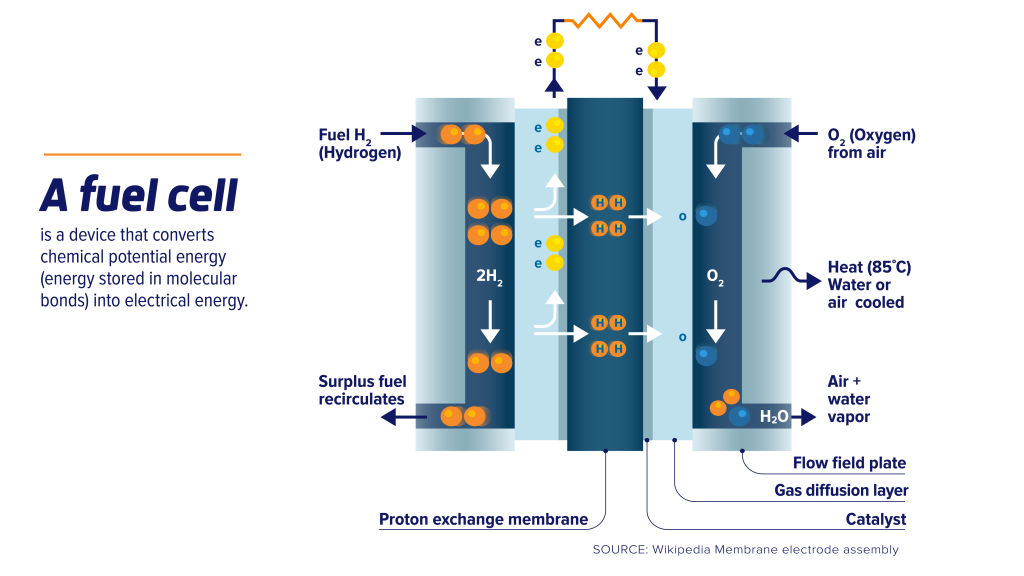Hydrogen circulation blowers play a crucial role in enhancing the efficiency of solid oxide fuel cells (SOFCs). They optimize hydrogen flow and utilization, ensuring that every molecule contributes to energy production. By recirculating unused hydrogen, these blowers improve overall system performance. This process not only boosts efficiency but also reduces waste, making SOFCs more sustainable. The precise control of hydrogen flow rates and pressures ensures optimal operation, highlighting the importance of hydrogen circulation blowers in modern energy solutions.

## The Role of Hydrogen Circulation in SOFCs
### Importance of Hydrogen in SOFC Operation
Hydrogen serves as a vital component in the operation of solid oxide fuel cells (SOFCs). It acts as the primary fuel, undergoing an electrochemical reaction to produce electricity. This process involves hydrogen molecules reacting with oxygen ions, resulting in the generation of water, heat, and electrical energy. The efficiency of this reaction directly influences the overall performance of the SOFC. Therefore, ensuring an adequate and consistent supply of hydrogen is crucial for maintaining optimal energy output.
### Circulation Dynamics
The dynamics of hydrogen circulation within SOFCs play a significant role in enhancing system efficiency. Hydrogen circulation blowers facilitate the movement of unused hydrogen back into the fuel cell system. This recirculation process ensures that no hydrogen goes to waste, maximizing fuel utilization. By maintaining optimal flow rates and pressures, these blowers help stabilize the fuel cell's operation. This stability leads to improved energy production and reduced emissions. Additionally, effective circulation dynamics contribute to the longevity of the SOFC, as they prevent the accumulation of excess hydrogen, which could potentially damage the system.
## Mechanics of Hydrogen Circulation Blowers
### Design and Functionality
Hydrogen circulation blowers exhibit a sophisticated design that enhances their functionality within solid oxide fuel cell (SOFC) systems. Engineers focus on creating compact and efficient designs to ensure seamless integration into various applications. These blowers typically consist of a motor, impeller, and housing, all working in harmony to facilitate the movement of hydrogen gas. The motor drives the impeller, which generates the necessary pressure to circulate hydrogen effectively. This design ensures that the blower can handle the high temperatures and pressures typical in SOFC environments.
The functionality of hydrogen circulation blowers extends beyond mere gas movement. They play a critical role in maintaining optimal hydrogen flow rates and pressures, which are essential for efficient SOFC operation. By precisely controlling these parameters, the blowers help maximize hydrogen utilization, reducing waste and improving overall system efficiency. Additionally, advancements in noise and vibration reduction technologies, as highlighted in studies like *The Study of the Design and Control for the Hydrogen Recirculation Blower*, contribute to quieter and more stable operation, enhancing the user experience.
### Integration into SOFC Systems
Integrating hydrogen circulation blowers into SOFC systems requires careful consideration of several factors. Engineers must ensure that the blower's design aligns with the specific requirements of the fuel cell system. This involves assessing the system's hydrogen flow needs, pressure requirements, and temperature conditions. Proper integration ensures that the blower operates efficiently, contributing to the overall performance of the SOFC.
The integration process also involves addressing potential challenges, such as ensuring compatibility with existing system components and minimizing any adverse effects on system operation. By focusing on these aspects, engineers can successfully incorporate hydrogen circulation blowers into SOFC systems, enhancing their efficiency and reliability. The *Hydrogen Recirculation Blower* patent provides valuable insights into innovative integration techniques, highlighting the importance of continuous research and development in this field.
## Benefits of Using Hydrogen Circulation Blowers
### Increased Efficiency
Hydrogen circulation blowers significantly enhance the efficiency of solid oxide fuel cells (SOFCs). They ensure that unused hydrogen recirculates within the system, maximizing fuel utilization. This process allows every molecule of hydrogen to contribute to energy production. By maintaining optimal flow rates and pressures, these blowers stabilize the operation of SOFCs. This stability leads to improved energy output and reduced waste. The precise control offered by hydrogen circulation blowers ensures that SOFCs operate at peak efficiency, making them a vital component in modern energy solutions.
### Environmental Impact
The environmental benefits of using hydrogen circulation blowers in SOFCs are substantial. By optimizing hydrogen utilization, these blowers reduce the amount of hydrogen waste. This reduction in waste contributes to a decrease in emissions, making SOFCs a more sustainable energy option. Additionally, the efficient operation of SOFCs, facilitated by hydrogen circulation blowers, results in lower carbon footprints compared to traditional energy sources. The integration of these blowers into SOFC systems supports the transition to cleaner energy technologies, highlighting their importance in addressing environmental challenges.
Hydrogen circulation blowers significantly enhance the efficiency of solid oxide fuel cells (SOFCs). They optimize hydrogen flow, ensuring maximum energy production and minimal waste. These blowers play a pivotal role in advancing SOFC technology, which is crucial for sustainable energy solutions. Future developments in hydrogen circulation technology promise even greater efficiency and environmental benefits. As SOFC technology evolves, hydrogen circulation blowers will continue to be integral in addressing power generation challenges. Their contribution to renewable energy systems underscores their importance in the transition to cleaner energy.





